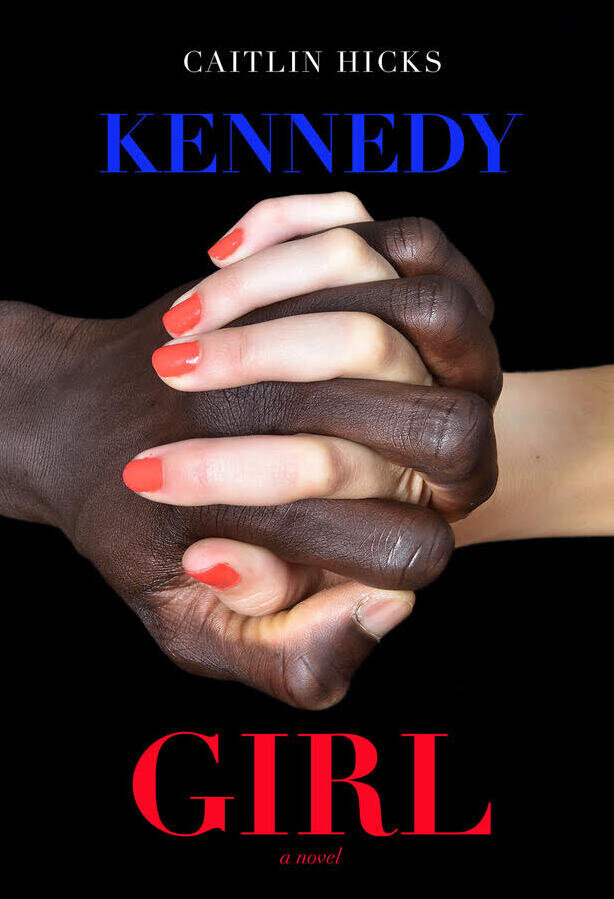Writing California: Pasadena
You have to love Pasadena to appreciate the special burn of sun, brand of smog and desire to be part of something beautiful it offers–and Caitlin Hicks does. Caitlin set her story, A Theory of Expanded Love, in the Sixties in the Southern California town she lived in during her formative years.
In Caitlin’s words
We attended St. Andrew’s Catholic school with the big red bell tower, right on the edge of a sketchy inner-city section of town. I remember the warm, sometimes smoggy nights, the quality of the early morning light in Southern California. The smell of eucalyptus, the dry, crackly oak leaves that covered the ground in summer.
Family excursions to Santa Monica Beach under brilliant, bright sunlight were always preceded by a long ride in the back of the VW bus on the sinuous freeways of Pasadena and Santa Monica. The white sand on the beach was so hot you had to run to the water so as not to burn your feet. The waves crashed into the shore and there was a lot of screaming and squealing with delight as we learned to body surf. Of course the sun was unforgiving: by the end of the day I could feel the tightness in my skin across my back and slept on my stomach to keep from touching my red hot sunburned skin. We called it ‘baking’.
back of the VW bus on the sinuous freeways of Pasadena and Santa Monica. The white sand on the beach was so hot you had to run to the water so as not to burn your feet. The waves crashed into the shore and there was a lot of screaming and squealing with delight as we learned to body surf. Of course the sun was unforgiving: by the end of the day I could feel the tightness in my skin across my back and slept on my stomach to keep from touching my red hot sunburned skin. We called it ‘baking’.
More than anything, the memory of the softness of the air and the warmth resonate with me – we were always outside concocting adventures; playing football on our brownish lawn, or Swamp Fox at the vacant lot during endless, hot smoggy days. There was a place called Camel’s Hump, a hill with caves we climbed up and scampered through. Even the smog had a personality – it filled our lungs after an afternoon of swimming at the Pasadena Athletic Club.
1963
Caitlin Hicks
Caitlin’s coming-of-age story features feisty yet gullible Annie Shea, trapped in her enormous Catholic family in the six months of 1963 between June and December. It begins on the June day that Pope John the 23rd dies and ends on New Year’s Eve in a warehouse where Annie is a volunteer, pasting flowers on USC float for the Rose Parade.
Why 1963? So much happened then, Caitlin says.
“It was the year of the first woman cosmonaut, bomb shelters, the hotline to Russia, the nuclear test ban treaty, and desegregation of schools in the south. A Catholic president was in the White House and every family owned a car and a black and white TV. It was the year that Dr. Martin Luther King rallied hundreds of thousands in Washington, D.C., for his ‘I have a dream’ speech. Barbara Streisand was still a teenager when she made her debut; the Beatles were rocking the UK, zip codes were introduced to U.S.mail, President Kennedy was shot in Dallas and our innocence as a nation ended. Then The Sixties, as we now remember it, really began. ”
Fertile ground for a story
Pasadena provides the perfect setting for audacious Annie to see her chance for glory. When the pope dies, family friend Cardinal Stefanucci is shortlisted to be elected the first American pope. Annie begins a hilarious campaign of lies-by-association with the Cardinal to elevate her tribe to the holiest of holy rollers in her parish. But when one of her brothers gets left behind at Disneyland, and ‘The Hands’ visit her that night, when her sister becomes pregnant ‘out of wedlock’, Annie discovers her parents will do almost anything to uphold their Catholic reputation. Questioning all she has believed, and torn between her own gut instinct and years of Catholic guilt, Annie takes courageous risks to wrest salvation from the tragic sequence of events set in motion by her parents’ betrayal.
A Theory of Expanded Love features the balmy weather, spring, and fertility:
“My dog Lucky went sniffing around the neighborhood as far as the vacant lot to the north and South Pasadena Avenue to the east and Orange Grove Boulevard to the west. These excursions produced litters of his pups, who were born more deeply mutt than he was. We only knew they were his offspring because there was always one who was his spitting image: short and squat, black and white, a bib around the neck and a striped tail that curled up over the rump. Nowadays, people would think to spay or neuter, but in those days, his prancing manliness was considered a gift. My Lucky would return from these excursions trotting proudly, his tongue hanging out, panting in quick puffs, later exhausted and spent as he lay down at the side of the house in the sun and napped the rest of the day.
School was out for summer.”
About Caitlin Hicks
A graduate of Loyola Marymount University with a BFA double degree in English (Writing) and French, Caitlin has published short stories, non-fiction, radio, theatre and film. She has worked as a writer for The Los Angeles Times, Mattel Toy Company, NBC and CBS radio. She has toured internationally as a playwright and performer and seen one of her theatre plays adapted to a feature film called Singing the Bones .




